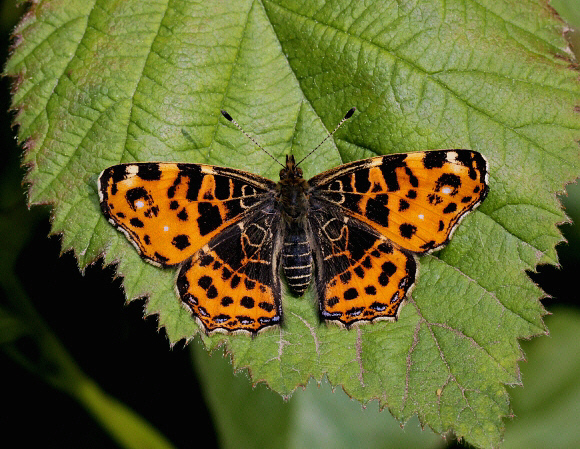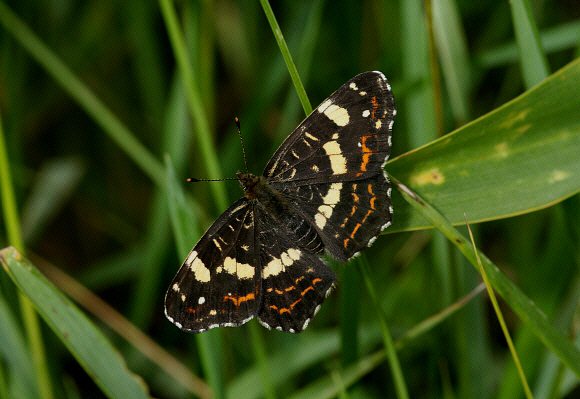 Araschnia levana, female, 1st brood – Adrian Hoskins
Araschnia levana, female, 1st brood – Adrian Hoskins
Introduction
There are 9 Araschnia species. The genus is centred on the temperate regions of China and the Far East, but one species levana is found across most of Europe and temperate Asia.
Araschnia levana exhibits very pronounced seasonal dimorphism. Both sexes of the spring brood are bright orange, marked with black spots and blotches that almost obscure the basal area of the wings. In contrast the summer generation adults are black with white spots and bands, and are very reminiscent of a small Limenitis species.
Araschnia levana is found across central Europe, and it’s range extends across temperate Asia to China, Korea and Japan.
 Araschnia levana, 2nd brood, Hor valley, B�kk hills, Hungary – Peter Bruce-Jones
Araschnia levana, 2nd brood, Hor valley, B�kk hills, Hungary – Peter Bruce-Jones
Habitats
This species is found in open deciduous woodlands, along riverbanks, and on farmland where the larval foodplant stinging nettle is profuse.
Lifecycle
The eggs are pale green and are laid on top of each other in long strings hanging from leaves of Urtica ( Urticaceae ). The caterpillars are black, speckled along the back with pale yellow, and have dark orange multi-branched spikes along the back and sides. The chrysalis is pale brown, marbled and flecked with olive. It is compact in shape, and is suspended by the cremaster from a stem of the foodplant.
Adult behaviour
Both sexes nectar at a wide range of herbaceous plants. Males imbibe mineralised moisture from damp soil.
